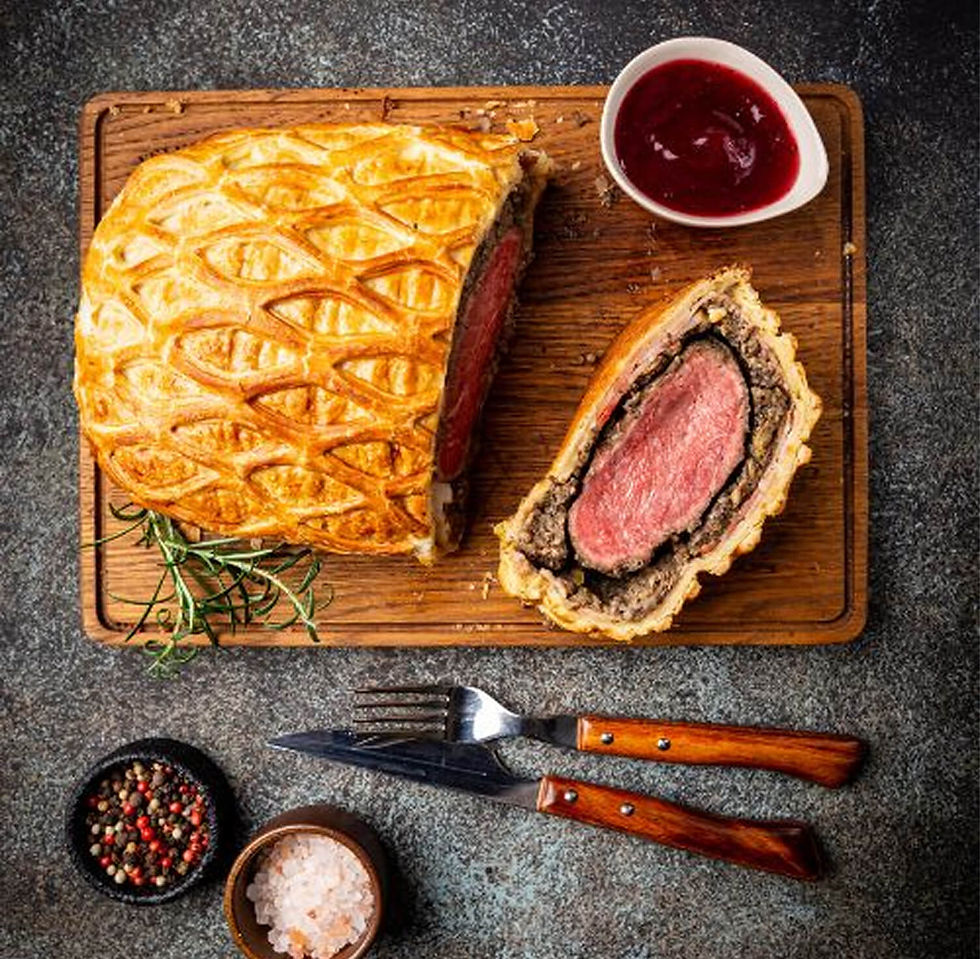Planting for Pollinators: Spring Things to Help Honeybees Thrive
- Anna-Hayes
- Mar 22
- 4 min read

A bee covered in pollen busily gathers nectar inside a delicate pink flower.
Spring is here, and the earth is awakening with new growth, blooming flowers, and the buzz of bees returning to their important work. As gardeners begin to plan their seasonal planting, there’s one group of workers you should be thinking about: pollinators, especially honeybees. Not only do these tiny creatures play a crucial role in the health of our ecosystems, but they also directly impact the food we eat. In this post, we’ll dive into the importance of planting a pollinator garden this spring and how it can help honeybees and other essential pollinators thrive.
Why Help Honeybees?
Honeybees are one of the most efficient and widespread pollinators in the world. When they visit flowers to gather nectar and pollen, they inadvertently transfer pollen from one bloom to another, aiding the process of fertilization. This process is essential for the production of fruits, vegetables, and seeds. In fact, about one-third of the food we eat depends on pollinators, including honeybees (Pollinator Partnership).
However, honeybees are facing serious challenges. Habitat loss, pesticide use, climate change, and diseases have all contributed to the decline in bee populations. By planting a pollinator-friendly garden, you can provide a safe haven for these vital insects and help ensure they continue to thrive.
The Power of Pollinator Gardens
A pollinator garden is designed to provide food, shelter, and nesting sites for bees, butterflies, and other beneficial insects. By incorporating specific plants that attract and nourish pollinators, you’re not only helping bees but also contributing to the biodiversity and health of your local ecosystem.
In the spring, many of our favorite flowering plants begin to bloom, providing the perfect early opportunity to plant a garden that serves as a nectar-rich oasis for bees. Here’s why starting a pollinator garden this season is so important:
Food and Nutrition for Honeybees: Bees are constantly on the lookout for fresh sources of nectar and pollen. Early spring blooms like crocus, croton, and dandelions are the first to offer these resources, helping bees build up their stores after a long winter. A diverse garden with plants that bloom throughout the growing season provides a steady supply of food, supporting bees from spring through fall.
Nurturing Habitat: Many pollinators, including honeybees, need suitable places to rest and nest. While they typically make hives in natural or man-made structures, creating habitat-friendly spaces within your garden can help. By leaving areas of bare soil, providing dead wood, or planting dense foliage, you offer a comfortable space for bees to rest and even create new hives. For more tips on creating bee habitats, visit Bee Conservation.
Promoting Biodiversity: By encouraging honeybees and other pollinators, you're not just helping them; you’re also supporting a more diverse ecosystem. Pollinators contribute to the health of a wide range of plants, which in turn support other wildlife, including birds, mammals, and other insects. A pollinator garden can become a small but vibrant sanctuary that enhances the health of your entire neighborhood.
Reducing Pesticide Exposure: One of the biggest threats to honeybees is exposure to harmful pesticides. By planting a pollinator garden, you’re actively encouraging the growth of plants that support bees, while also reducing your reliance on chemical pesticides. Instead, you can adopt organic gardening methods, such as using natural pest control or companion planting, to keep your garden healthy without harming pollinators.
Create a Pollinator Garden This Spring
If you're ready to give honeybees and other pollinators a helping hand, here are some practical steps to plant a pollinator-friendly garden this spring:
Choose Pollinator-Friendly Plants: Opt for a variety of plants that provide nectar and pollen for bees. Native plants are often the best choice because they are adapted to the local environment and are more attractive to local pollinators. Examples include lavender, sunflowers, coneflowers, bee balm, and wildflowers like black-eyed Susans. Try to select plants that bloom at different times throughout the season to keep pollinators well-fed. For more on native plant choices in Oregon, visit the Portland Native Plants.
Plant in Clusters: Bees prefer large patches of flowers to smaller individual plants. Grouping plants together in clusters helps them find and gather nectar more efficiently. Aim to plant at least three or more of the same species together for maximum impact.
Provide Water: Bees need a water source for hydration, especially during hot months. Create a shallow water dish with pebbles where bees can safely drink without the risk of drowning.
Create Shelter: In addition to flowers, bees need places to rest and build their nests. Leave areas of your garden undisturbed with exposed soil or old wooden structures, such as logs, where solitary bees can nest.
Avoid Pesticides: To ensure your pollinator garden is truly bee-friendly, eliminate or reduce the use of harmful chemicals. Choose organic or non-toxic alternatives to manage pests, and make sure to use these treatments in the early morning or late evening when bees are less active.
Add Pollinator Habitat Features: Bees are often drawn to areas that mimic natural habitats. Consider incorporating natural features like rock piles, a small pond, or patches of wild grass to provide additional shelter and food sources.
Gardens That Give Back
When planning your garden and landscaping this spring, consider planting a pollinator garden not just for the beauty of the blooms but for the impact it can have on the environment. By providing a steady food supply, safe nesting spots, and a chemical-free environment, you can help honeybees thrive and support the many benefits they bring to our world. Plus, you'll enjoy watching these fascinating creatures at work in your own backyard, knowing that you're doing your part to preserve their population for future generations. The bees will thank you and so will we. Without healthy bee populations, Sparkle & Honey couldn’t exist!
1
Searing the Beef
Sear beef fillets on high heat for 2 minutes per side to form a golden crust. Let it cool before proceeding to keep the beef tender.
1
Searing the Beef
Sear beef fillets on high heat for 2 minutes per side to form a golden crust. Let it cool before proceeding to keep the beef tender.
1
Searing the Beef
Sear beef fillets on high heat for 2 minutes per side to form a golden crust. Let it cool before proceeding to keep the beef tender.
1
Searing the Beef
Sear beef fillets on high heat for 2 minutes per side to form a golden crust. Let it cool before proceeding to keep the beef tender.
Notes



1
Season the good fresh beef fillets with salt and black pepper. Heat olive oil in a pan over high heat and sear the fillets for 2 minutes per side until it fully browned. Remove the beef from the pan and brush with a thin layer of mustard. Let it cool.



1
Season the good fresh beef fillets with salt and black pepper. Heat olive oil in a pan over high heat and sear the fillets for 2 minutes per side until it fully browned. Remove the beef from the pan and brush with a thin layer of mustard. Let it cool.



1
Season the good fresh beef fillets with salt and black pepper. Heat olive oil in a pan over high heat and sear the fillets for 2 minutes per side until it fully browned. Remove the beef from the pan and brush with a thin layer of mustard. Let it cool.



1
Season the good fresh beef fillets with salt and black pepper. Heat olive oil in a pan over high heat and sear the fillets for 2 minutes per side until it fully browned. Remove the beef from the pan and brush with a thin layer of mustard. Let it cool.
Instructions
Quality Fresh 2 beef fillets ( approximately 14 ounces each )
Quality Fresh 2 beef fillets ( approximately 14 ounces each )
Quality Fresh 2 beef fillets ( approximately 14 ounces each )
Beef Wellington

Beef Wellington
Fusion Wizard - Rooftop Eatery in Tokyo
Author Name

Beef Wellington is a luxurious dish featuring tender beef fillet coated with a flavorful mushroom duxelles and wrapped in a golden, flaky puff pastry. Perfect for special occasions, this recipe combines rich flavors and impressive presentation, making it the ultimate centerpiece for any celebration.
Servings :
4 Servings
Calories:
813 calories / Serve
Prep Time
30 mins
Prep Time
30 mins
Prep Time
30 mins
Prep Time
30 mins






Comments